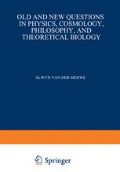Abstract
It is now possible in practice to observe macroscopic fluctuations in the time domain initiated by an isolated single spontaneous atomic emission of light. This is the socalled “superfluorescence effect (SF)” described in some recent papers.1 SF produces radiation pulses with much larger amplitude than predicted for normal incoherent radiation processes. The phenomenon is similar to the so-called “laser effect,” because the coherent decay of something like 108 atoms is triggered by a single spontaneous emission due to quantum fluctuations of the electromagnetic field in vacuum. This phenomenon, first detected in 1973,2 has been observed in a number of near-infrared, infrared, and optical transitions,3 Atomic cesium is used for studying SF from a pencilshaped volume of active atoms. The SF emission from the pencil goes mainly through its end-faces into two narrow solid angles ?Ω. The emitted light pulse reaches a peak intensity proportional to N2 (where N is the number of excited atoms) at the so-called “delay time” tD ~ (tR/4) (1n N)2, withtR = tn/ (N?Ω/4π). The emitted field behaves a classical coherent field. It has a well-defined amplitude and phase: SF emission pulses from two different samples with slightly different SF transmission frequencies produce beats. Experiment confirms that the strength of the initiating quantum noise determines the average delay time.4 SF is set off by the first photon emitted spontaneously in the solid angle ?Ω and yields as predicted by theory a relative standard deviation in the delay time of 12% for N = 108 excited atoms.
Access this chapter
Tax calculation will be finalised at checkout
Purchases are for personal use only
Preview
Unable to display preview. Download preview PDF.
References and Notes
Q. H. F. Vrehen, M. F. H. Schuurmans, and D. Polder, Nature 285, 70 (1980).
N. Skribanowitz et al., Phys. Rev. Lett. 30, 309 (1973).
Q. H. F. Vrehen, Laser Spectroscopy IV Proceedings of the Fourth Int. Conf. Rottach-Egern; Fed. Rep. Germany, June 11–15, 1979, H. Walther and K. W. Rothe, editors (Springer-Verlag, Heidelberg, 1979).
Q. H. F. Vrehen and M. F. H. Schuurmans, Phys. Rev. Lett. 42, 224 (1979).
See Ref. 3
R. L. Pfleegor and L. Mandel, Phys. Rev. 159, 1084 (1967)
R. L. Pfleegor and L. Mandel, J. Opt. Soc. Amer. 58, 946 (1968).
E. E. Fitchard, Found. Phys. 9, 525 (1979).
F. Selleri and J. -P. Vigier, “Sur la description de Copenhague de la mésure de spin des systemes quantiques correlées,” Bari-Poincaré preprint (1980).
A. Einstein, in A. Einstein Philosopher-Scientist P. A. Schlipp, editor (Library of Living Philosophers, 1949).
L. de Broglie, La Theorie Quantique Restera-t-elle indeterministe? (Gauthier-Villars, Paris, 1952).
D. Bohm and J. -P. Vigier, Phys. Rev. 96, 208 (1954)
W. Lehr and J. Park, J. Math. Phys. 18, 1235 (1977)
E. Nelson, Phys. Rev. 150, 1079 (1966).
L. de Broglie, La Thermodynamique de Ja Particule lsolée (Gauthier-Villars, Paris, 1964).
J. -P. Vigier, Nuovo Cimento Lett. 24, 265 (1979); 24, 258 (1979)
N. Cufaro-Petroni and J. -P. Vigier, Nuovo Cimento Lett. 25, 15 (1979); 29, 149 (1979).
J. F. Clauser, Phys. Rev. D 9, 853 (1974).
F. Selleri, Nuovo Cimento Lett. 1, 908 (1969)
A. Szczepanski, Found. Phys. 6, 427 (1976)
A. Garuccio and J. -P. Vigier, Found. Phys. 10, 797 (1980),
Author information
Authors and Affiliations
Editor information
Editors and Affiliations
Rights and permissions
Copyright information
© 1983 Plenum Press, New York
About this chapter
Cite this chapter
Selleri, F., Vigier, J.P. (1983). Induced Superfluorescence and the Nature of the Wave-Particle Duality. In: van der Merwe, A. (eds) Old and New Questions in Physics, Cosmology, Philosophy, and Theoretical Biology. Springer, Boston, MA. https://doi.org/10.1007/978-1-4684-8830-2_29
Download citation
DOI: https://doi.org/10.1007/978-1-4684-8830-2_29
Publisher Name: Springer, Boston, MA
Print ISBN: 978-1-4684-8832-6
Online ISBN: 978-1-4684-8830-2
eBook Packages: Springer Book Archive

